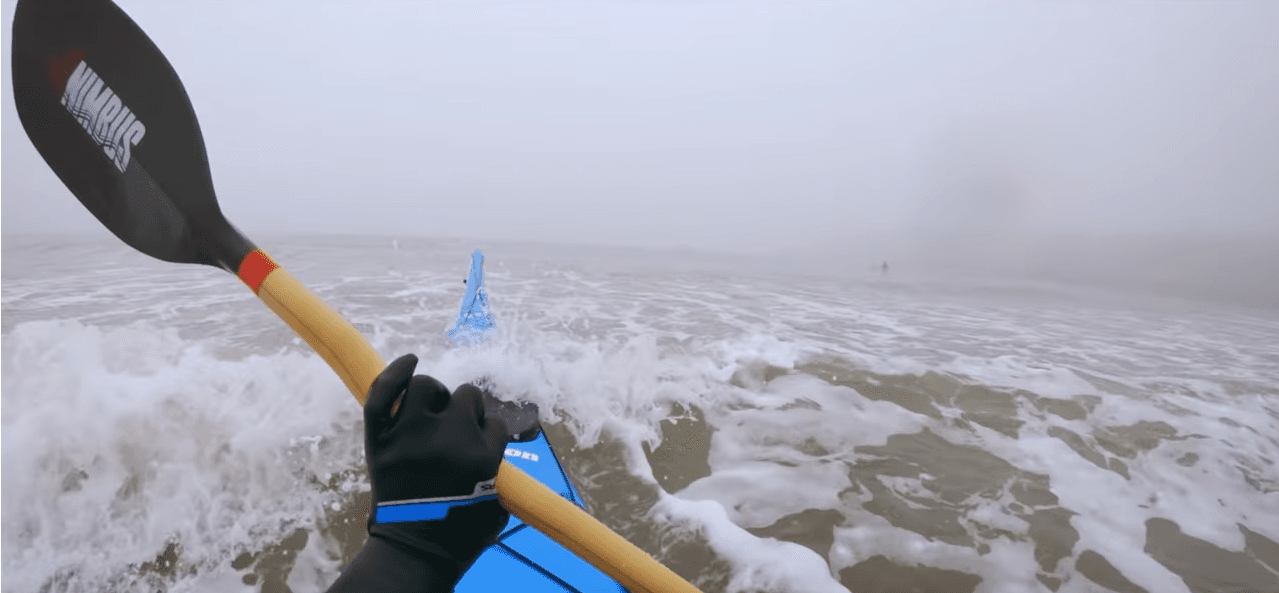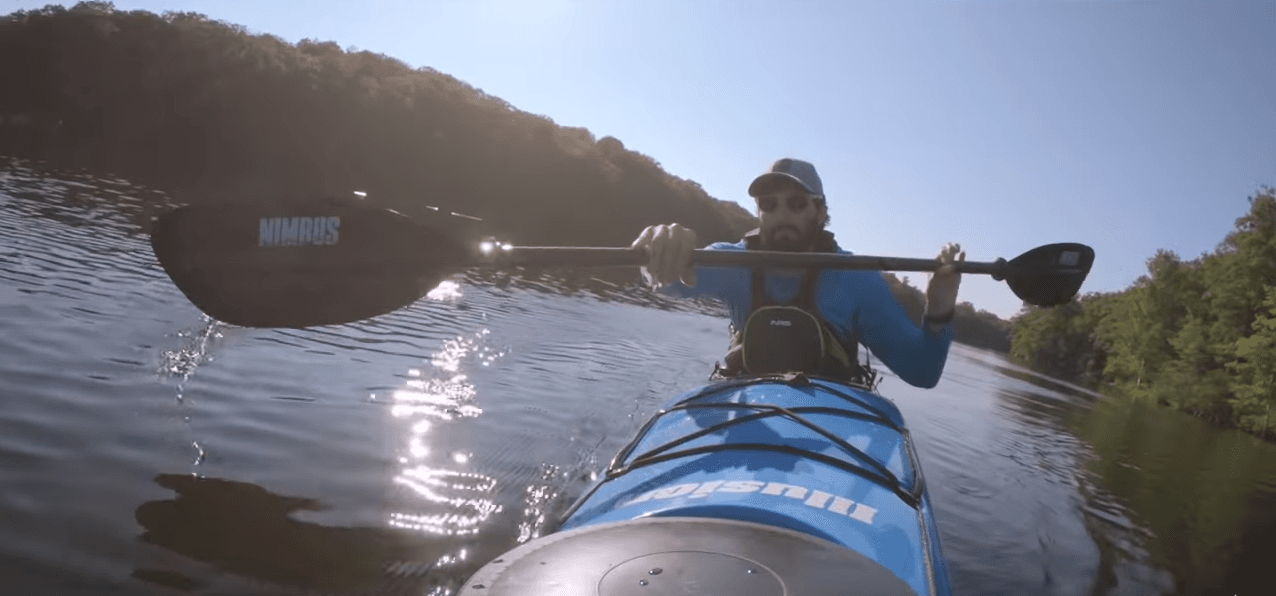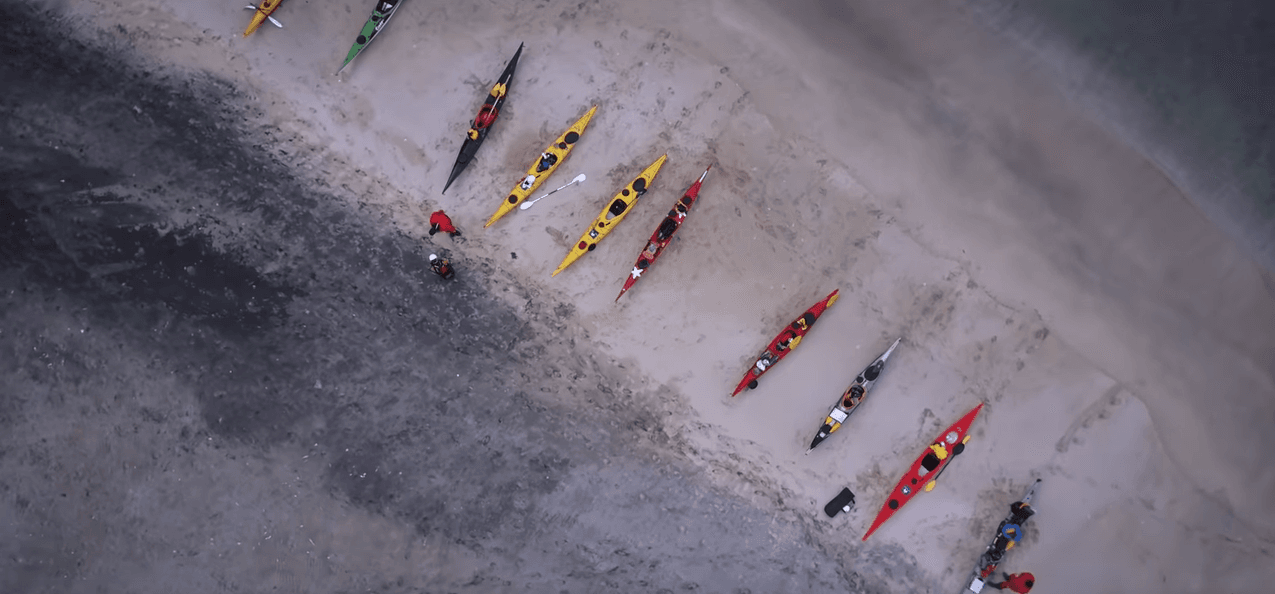How to Paddle a Kayak in a Straight Line
People generally think paddling a longer kayak will make them go straighter, but with proper technique you can paddle any sized kayak straight as an arrow. Watch this video for a list of helpful tips for how to paddle straight.
-
Newer paddlers often reach out and say “hey, what are some tips for me to keep my kayak going in a straight line?”
So here's some tips that might be helpful.
Later in the video I'll discuss a little bit why a longer kayak will make things a little easier in keeping a straight line, but that doesn't mean that a short kayak can't go in a straight line as well. With good technique, you should be able to paddle any kayak in a pretty straight line. So here's a couple of tips and things that I usually see when I'm guiding or when I'm working with new paddlers.
TAHE 10'6 & 11'6 SUP-YAK Inflatables
2-in-1 Kayak & Paddle Board complete packages for single or tandem use.
1. Hand positioning

The first one that comes up a lot is hand positioning. When you're just getting into paddling you might not know exactly where to put your hands on the paddle and then throughout the day your hands might move around on the paddle. That might make it so that you have more of the paddle out of one side than the other, and that will not help you in going in a straight line.
A good rule to follow, and it's okay to do this several times throughout the day – and as you get more comfortable with it you'll have to do it less and less until eventually your hands will just get used to going to their positions automatically, you'll just be able to feel it out.
But at first it's okay to every so often take the paddle, put it up over your head, let your arms go into a comfortable position where your elbows are making a right angle and then when you take the paddle down make sure there's the same amount of paddle to either side. This should provide you with a comfortable hand position and will create a strong paddler box in front of you.
2. Match strokes on both sides
Another thing I often see with new paddlers is they might not be matching the same kind of strokes on both sides. That's okay, that's just because they're just getting started. For example, they might be doing a full forward stroke with one paddle but then their other hand might be doing a sweep stroke.
It's good to go back and understand the difference between a forward stroke and a turning stroke, a sweep stroke. A forward stroke is trying to get the most forward momentum, the most forward power out of getting the blade in the water – and then get as much forward force out of that stroke.
A sweep stroke usually keeps the paddle very close to the surface of the water, it goes in an arc out and around, and away from the kayak. That's a stroke that's used to turn the kayak. So keep an eye on your blades and if you're trying to go in a straight line, try to match your stroke on both sides.
3. Dominant hand

Another thing that comes up a lot, which is actually very funny, is sometimes I'll see someone paddling and I see that they're always veering off to one side. And if none of the other usual things that will cause the kayak to turn are present, it could be this. A lot of times newer paddlers will use their hands, they'll use their arms to paddle, and that dominant hand will probably put in more strength into each stroke – meaning the kayak will probably turn away from that particular side.
One thing that's very important to talk about is as you progress, your forward strokes should change from using your hands and using your arms to using your core and using your legs. The rest of the body, the bigger muscle groups are the ones that should be providing all of that force for your forward stroke. Your arms and your hands simply are going to be transferring all of that from your body to the paddle. Don't get me wrong, we all start there. Most new paddlers, the first time they get on the water, they'll be paddling with their arms – and that's okay. But as you progress look to improve that forward stroke.
4. Anticipate your kayak’s response
Another thing that's interesting to see, you should try to anticipate what the kayak is doing. What I mean is, we don't have breaks. We don't have immediate actions and responses in the water. I often see new paddlers, when they're going and I can see that the boat is starting to turn a certain direction. They sometimes don't really notice it until it's a little too late, and then they put in lots of correcting strokes on the other side but by the time they realize that they over-corrected, the kayak then turns in the opposite direction again.
So the idea is to simply anticipate what you're trying to do so that you correct ahead of time. The more practice you have, the more you'll be able to anticipate this and the easier it is going to be. For example, if you're matching your strokes, a stroke you put in now might actually show you what is going to be doing in a couple of strokes later on. If you add two, three, four corrective strokes on one side all of a sudden a couple of seconds later you'll see the boat reacting. So anticipate what the boat is doing and as you progress and as you get better you're going to get better at doing that as well.
5. Longer water lines will track better

The last thing to mention is that longer kayaks will just inherently track better. If they have a longer waterline they will just track better. So a 10-foot kayak will probably want to turn side-to-side a bit more than, let's say, a 17 or 18 footer. But with proper technique even the shortest of kayaks can be kept going in a pretty straight line.
You can look at some whitewater paddlers; tiny, tiny play boats they can keep going straight because they've gotten to a point that they can match each stroke on each side and then keep it going in a straight line.
I think the main thing is to try to watch to see how much of your power goes actually into going forward and then trying to see if you can match left and right, because once you have that kind of down, muscle memory will eventually take over and just keep you going in a straight line without you thinking about it.
Now, all of these tips mostly apply when conditions are calm and there's no wind. If you want to keep a kayak going straight when there's high winds or when there's waves, that's a different story and we can talk about that in a different video.
Related Articles
By changing how you edge and balance your boat you can increase your stability and adaptability. Using…
One of the great things about stand-up paddle boarding is that it can be a remarkably safe and…
Whether you were new to paddling in 2018 or you're an experienced paddler, you can never stop learning.…
As a professional educator and a kayaking instructor I must begin this article by saying: I believe…




